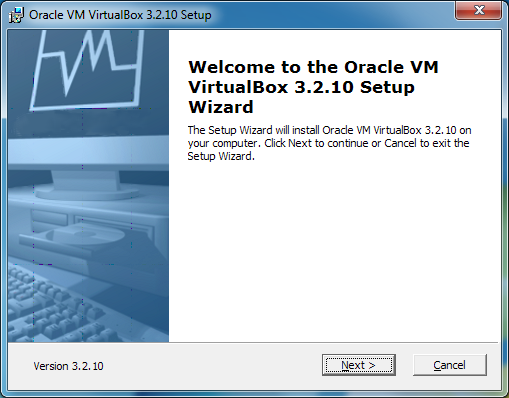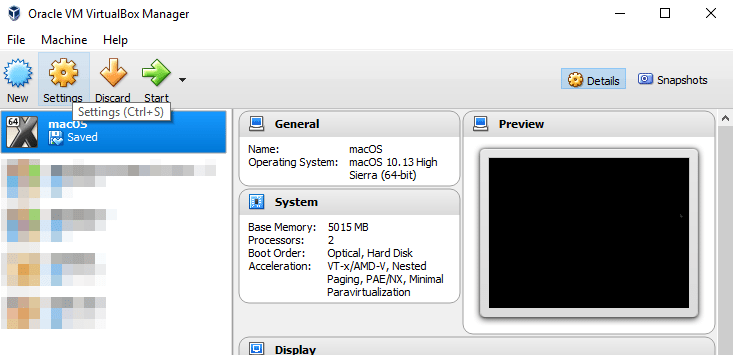

- #HOW TO CREATE AN OS X VM HOW TO#
- #HOW TO CREATE AN OS X VM MAC OS#
- #HOW TO CREATE AN OS X VM INSTALL#
- #HOW TO CREATE AN OS X VM CODE#

#HOW TO CREATE AN OS X VM HOW TO#
So long as you know how to access the Mac over SSH (just need the IP, username, and password), this is easy.
#HOW TO CREATE AN OS X VM INSTALL#
Install fabric (Python module, easily installed with pip) on your Windows machine so that you can run the build on your Mac as part of the same automated build process.įabric allows you to utilize SSH from Python. So, theoretically you could use Nuitka with clang configured to cross-compile for OSX. I haven't looked into them much, but for Nuitka, I know that it can also be used to create a standalone executable when passed the -standalone flag (See: Moving to other machines). I honestly have no idea if anyone has done this. The second tricky part might be setting up the clang compiler to be used with these. Thankfully this is something that can be done by using tools like Nuitka or Cython. If you do actually find a way to that you now need a. Problem is, this is not a simple task it is probably way harder than what you're willing to do since it is riddled with complex issues (From OSX to Windows example).

So, in order remedy the incompatibility of executables, you could theoretically use clang as a cross compiler. One compiler that I've heard supports cross-compilation is clang. So what we need is the ability to cross-compile things. The general issue we're facing here is that executables for windows are simply not compatible with OSX, heck, Linux executables aren't either. Now, the reason why I said there is no simple way to do this is because there might be one but, from what I can see, it is so tedious you shouldn't even consider it. Since OSX is generally not easy to virtualize, from what I know, you kinda run out of luck here. The general consensus for achieving these sort of things is via Virtual Machines you create a VM image of the target OS, run the dedicated tool for that OS inside the vm and then tranfer the bundled executable to compatible machines. Even if not on Windows though, solutions don't exist for creating an OS agnostic tool. This wraps out the tools available on for creating standalone applications on Windows. NOTE: py2app must be used on OSX to build applications, it cannot create Mac applications on other platforms. Py2app: This is not an option since py2app is supported only OSX machines based on their note: So if you want to freeze your program for Windows, freeze it on Windows if you want to run it on Macs, freeze it on a Mac. PyInstaller once tried to support cross-compilation (From Linux -> Windows) but later dropped the idea.Ĭx_freeze: Looking at their Freezing for other platforms question in their Frequently Asked Questions list:Ĭx_Freeze works on Windows, Mac and Linux, but on each platform it only makes an executable that runs on that platform. PyInstaller has been used successfully with AIX, Solaris, and FreeBSD, but is not tested against them. However, it is not a cross-compiler: to make a Windows app you run PyInstaller in Windows to make a Linux app you run it in Linux, etc.
#HOW TO CREATE AN OS X VM MAC OS#
PyInstaller is tested against Windows, Mac OS X, and Linux.

PyInstaller: According to their documentation: From these we can take a look at the Windows supported projects:ībfreeze: Not maintained, no documentation on limitations generally superceded by the rest in this list.
#HOW TO CREATE AN OS X VM CODE#
Similar lists can be found in in Distribution Utilities and Freezing Your Code - The Hitchhiker's Guide to Python. I might have read things wrong but there's no explicit note of cross platform support. One line stands out:Īlso, unless otherwise noted, all programs listed below will produce an exe specifically for the operating system it's running in. There's already a long and curated list of options specified in micheal0x2a's excelent answer in Create a single executable from a Python project which outlines most tools available for creating standalone distributions of a Python program. I outline a completely unprobable solution in the end that's probably too complex to consider.Įnd result: Keep doing it manually, it's probably the best option so far.ĭrawing from credible and/or official sources: Apparently, no simple way to do this with the standard set of tools you have mentioned.


 0 kommentar(er)
0 kommentar(er)
